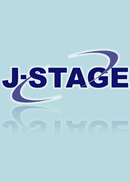Current issue
Displaying 1-7 of 7 articles from this issue
- |<
- <
- 1
- >
- >|
-
2025Volume 37Issue 1 Pages 3-
Published: 2025
Released on J-STAGE: November 28, 2025
Download PDF (301K) -
2025Volume 37Issue 1 Pages 6-7
Published: 2025
Released on J-STAGE: November 28, 2025
Download PDF (238K) -
2025Volume 37Issue 1 Pages 8-12
Published: 2025
Released on J-STAGE: November 28, 2025
Download PDF (484K) -
2025Volume 37Issue 1 Pages 15-34
Published: 2025
Released on J-STAGE: November 28, 2025
Download PDF (1088K) -
2025Volume 37Issue 1 Pages 36-48
Published: 2025
Released on J-STAGE: November 28, 2025
Download PDF (1117K) -
2025Volume 37Issue 1 Pages 50-70
Published: 2025
Released on J-STAGE: November 28, 2025
Download PDF (1588K) -
2025Volume 37Issue 1 Pages 72-120
Published: 2025
Released on J-STAGE: November 28, 2025
Download PDF (2487K)
- |<
- <
- 1
- >
- >|
